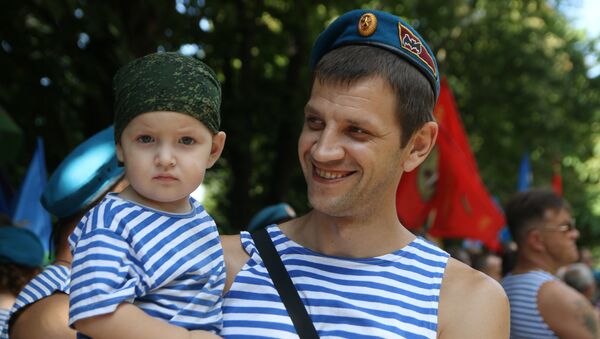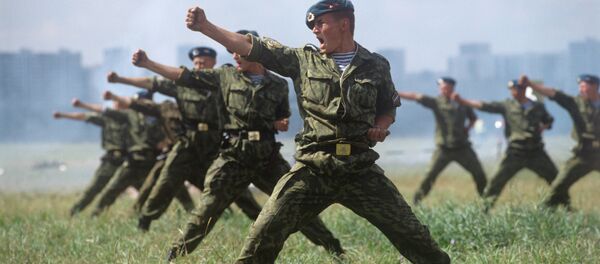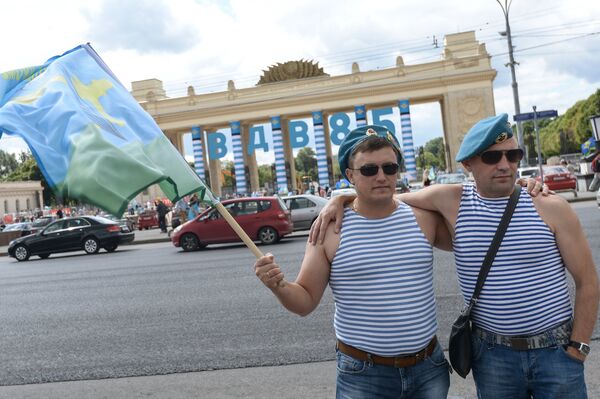The VDV in Russia is seen as the military elite, on par with the country's Strategic Rocket Forces and Aerospace Defense Forces: the best trained and combat-ready units and formations in the armed forces. This is all reflected in the scale of celebrations.
Airborne landing detachments were established after the initial 1930 experimental jump; however the creation of larger units had to wait until 1932–33.
The elite military force has several nicknames in Russia. One is the “blue berets” after the hats its soldiers wear.
Another one is the “Troops of Uncle Vasya” after Army General Vasiliy Margelov, who dedicated his heart, experience and commander’s talent to the early development of the airborne troops. He managed to turn the airborne troops into an elite fighting force, bringing up and training the soldiers for whom no mission was impossible. "Troops of Uncle Vasya" shares the initials VDV in Russian.
Aside from their blue berets, Russian paratroopers also wear a distinctive uniform.
A paratrooper’s shirt (in Russian Telnyashka) features light blue and white stripes, and has become a symbol of great combat pride for those who wear it; a symbol of masculinity and self-confidence.
Such striped shirts resemble those worn throughout Russia's armed services; they differ according to the color of the stripes. Telnyashkas are worn by:
— The Airborne Troops (VDV) and GRU Spetsnaz (light blue, representing the sky);
— Submarine crews, OMON and the Internal Troops (black, representing deep water);
— The Navy and the Marines (dark blue, representing the sea);
— The Border Troops (light green, representing forests)
General Vassiliy Margelov, the founder of the Soviet Airborne Troops, served in a Marines unit during World War II, and procured the striped shirt for the VDV as a mark of their elite status.
There is a popular saying that depicts Telnyashkas as a symbol of masculinity: “We are few in number, but we wear Telnyashkas!”
The military command has always paid special attention to its paratroopers: they have always had the most advanced weapons and equipment, its officers are paid a higher allowance and the best recruits are commissioned to the airborne corps. VDV's motto, “Nobody but us” celebrates this enviable status.
Today, VDV is the core of the newly created Rapid Reaction Force. Given the geographic extent of the territory of Russia, VDV can quickly (in no more than a day) create and build mobile groups in threatened areas. Russian Airborne Troops are formed with over 10 airborne and air assault battalions.
According to Airborne Troop Commander Col.-Gen. Vladimir Shamanov, Russia’s Airborne Troops will soon be reinforced with tank units.
Russian Airborne Troops have armored vehicles, but tanks have never been included in their inventory.
The annual celebration of Russia’s elite Airborne Forces usually combines shows of strength and somewhat frenzied drinking.
Traditional displays of strength range from breaking bricks to hand-to-hand combat and other shows.
The holiday has been celebrated in Moscow’s Gorky Park since the 1990s, when sports airdrops were held on this day. In 1997, flights over Moscow were banned, but the airborne troops’ tradition to gather in this park has remained.
One indispensable tradition is to swim in the park’s largest fountain, which is strictly prohibited and thus is a source of exuberance and high spirits.







